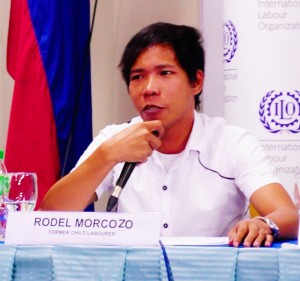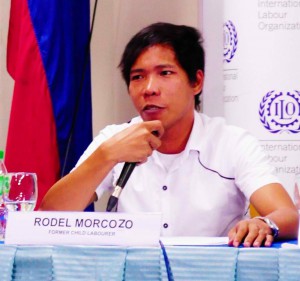By PAULINE MANLUSOC

WITH the ongoing public outcry against the alleged exploitation of a six-year-old boy in a popular entertainment show, an international organization is looking to ways to end child labor and abuse in the Philippines.
In a press conference held at the Occupational Safety and Health Center Philippines in Quezon City Tuesday, the United Nations’ International Labour Organization (ILO) said it has targeted to rid the country of the “worst forms of child labor” by 2016.
The Philippines is reportedly among 120 countries where the worst forms of child labor persist.
The ILO said children from the poorest communities are subjected to slavery, commercial sexual exploitation, drug trafficking and other illegal activities, and jobs that endanger their life or health such as working as sakada (sugarcane farmers) and recruits in gold mining sites.
“Child labor is closely tied with poverty and educational access. Poor families have no choice but to send their children to work in order to just survive,” ILO Country Office Director Lawrence Jeff Johnson said.
Based on the National Statistics Office 2001 survey, there are 4.18 million working Filipino children, 60 percent or 2.4 million of whom are exposed to hazardous working conditions.
Roel Morcozo, who was exposed to child labor at the age of 10, worked at a gold mine in Camarines Norte. Now an adult and an active child advocate, Morcozo remembers the burning heat of the sun on his skin as he sifted gold from the sand using mercury-based liquids.
For working eight to 12 hours a day, Morcozo earned a measly US$1 to 2. Morcozo also eventually had to quit school because the work bore hard on him and his parents could no longer send him to school.
“We recognize that the child labour program is still a problem, continues to be a problem. It remains to be a priority concern of the government,” Labor Undersecretary Lourdes Trasmonte said during the press conference.
The Department of Labor and Employment (DOLE) said it will combat child labor through the implementation of the Philippine Programme Against Child Labour (PPACL), a program adopted in 2007. This program aims to reduce the worst forms of child labor by 75 percent by 2015.
The government also sees the need to conduct a new survey to accurately capture the current plight of Filipino child laborers.
The ILO meanwhile is working with local partners through the International Programme on the Elimination of Child Labour (IPEC). In 2009, the ILO and the United States Department of Labor (USDOL) partnered for the IPEC Time Bound Project Phase 2 called “Towards a Child Labour-Free Philippines.”
The program targeted some of the poorest provinces — Northern Samar, Quezon, Bukidnon, and Masbate – and provided aid to pupils, children from indigenous groups, and child laborers in farms.
The ILO Global Report on Child Labour in 2010 found that while child labor continues to decline worldwide, it is doing so at a much slower pace than before.
(The author is a VERA Files intern from the University of Sto. Tomas)
